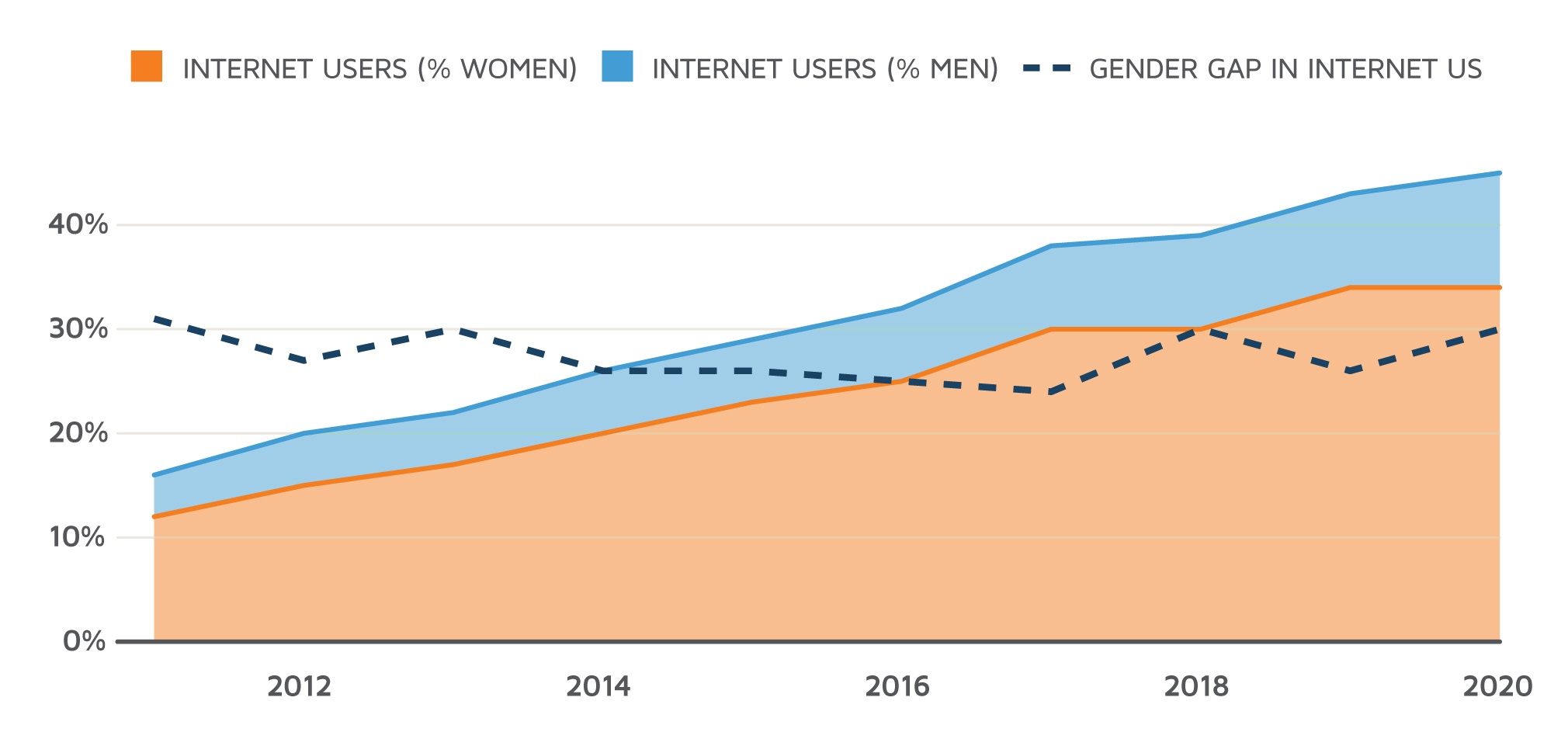Thirty-two low- and middle-income countries have lost about US$1 trillion from their GDP due to the exclusion of women from the digital world. Although the digital gender gap has recently been decreasing worldwide, the gap has not narrowed sufficiently to minimize economic losses. The Alliance for Affordable Internet (a global coalition of businesses, governments, and civil society actors aiming to limit the digital gender gap) reached these conclusions and also assessed that in some countries men are 50% more likely to be online than women.
What is the extent of the digital gender gap?
The publication cites data from the International Telecommunication Union which found that the majority of women worldwide have never used the internet. While in 2019 55% of men used the internet, this was only 48% in the case of women. This divide involves about 303 million people, comparable to the US population.
The report investigated the digital gender gap in 32 low and middle-income states and found that only one-third of women were connected to the internet as opposed to almost 50% of men. Furthermore, the gender gap between the two sexes has only dropped half a percentage point since 2011, when it stood at 30.4%, to 30.9% in 2020. The number of women with a mobile internet facility in low- and middle-income countries is about 234 million lower than the number of men. The divide is the deepest in sub-Saharan Africa and South Asia where the gender difference between men and women exceeds 55%.

Economic costs of the digital gender gap
Inequalities between women and men in terms of internet access also generate economic losses. The report shows that in the last decade the 32 low- and middle-income countries lost about US$1 trillion from their GDP due to the digital gender gap. In 2020 alone, US$24.7 billion was lost in tax revenues while the loss of GDP was US$126 billion. Should the governments of the 32 states under scrutiny close the digital gender gap, they stand a good chance of gaining a profit of about US$524 billion from economic activity by 2025.
Causes of the digital gender gap
The main reason causing women to have less access to the internet in low- and middle-income is its cost. Many women cannot afford to buy data or devices in order to use the internet particularly those who are also affected by the gender pay gap. Globally, women earn around 77 cents for each dollar earned by a man which means that men can buy a smartphone for one month’s wage while women have to work for another 10 days to achieve this. Women are also more unlikely to be the owners of smartphones. In the 32 countries surveyed, women are 15% less likely to have a smartphone compared to men. The report also indicates that security concerns are another obstacle in this respect as women have greater fears in terms of online privacy and security. Another barrier that keeps women offline is the lack of skills and literacy needed to use the internet. According to data from 2019, 90% of adult men had the knowledge necessary to use the internet as opposed to 83% of adult women.
Recommendations
In order to build inclusive digital economies, the report’s authors suggest countries:

